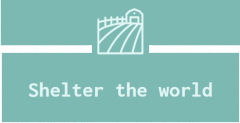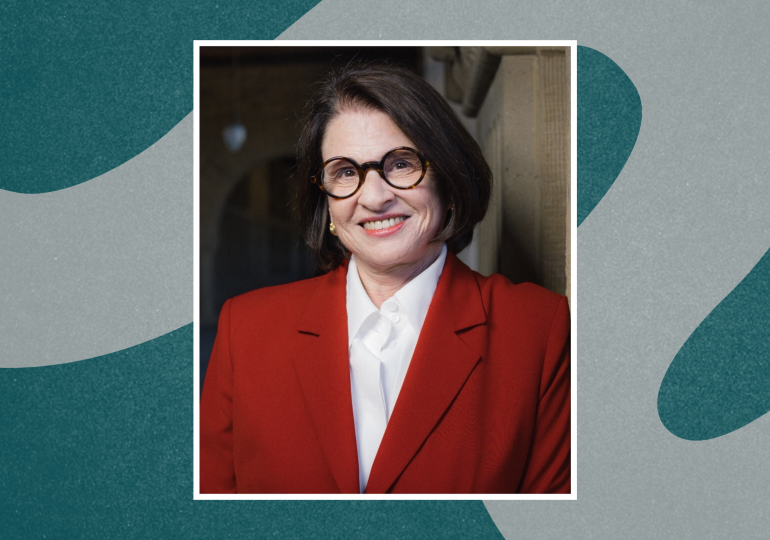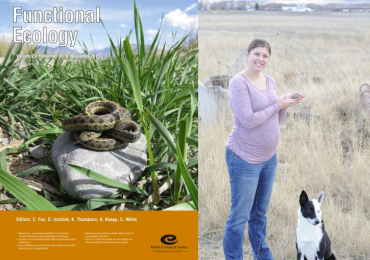Laura Carstensen’s favorite lecture of the year is the one when she tells undergrads at Stanford University that—contrary to what they’ve probably been told and believe—these are not the best years of their lives. Those come much, much later.
“I look out at a sea of 100 students sitting in a classroom, and I love the look on their faces. It’s just such relief,” says Carstensen, a professor of psychology and founding director of the Stanford Center on Longevity. “I can visibly see it, because not only are the late teens and 20s the worst time in our lives—with the highest rates of loneliness, anxiety, and depression—but people are constantly telling [young people] that they’re the best years.”
[time-brightcove not-tgx=”true”]
Carstensen’s research consistently suggests that starting in people’s mid-20s, they begin experiencing fewer negative emotions. That doesn’t mean they have more frequent or intense positive emotions; rather, their emotional balance improves as they age.
As part of TIME’s series interviewing leaders in the longevity field, we caught up with Carstensen to talk about what drives these changes—and the surprising type of friendship she wishes more people would prioritize.
This interview has been condensed and edited for clarity.
Your research seems to suggest that older age is something to look forward to, not dread. Is that how you see it?
Yes, and in many ways, it’s the best time in life. Emotionally speaking, it’s the best time in life. Now let me be clear: There’s a lot not to like about aging; physically, it sucks. It’s not a good story, but the emotional one is. There’s not a perfect stage in life—there’s always trade-offs. When you’re young and miserable, you’re also at your physical peak, and that’s wonderful. Having a limitless future is exciting, too.
Older people don’t have that, but they do have a sense of focus and what matters in their life. There’s this juxtaposition of physical vitality and emotional richness, and they’re occurring in different stages in different ways.
So what happens to emotional well-being as we get older?
People have a better emotional experience. They’re more satisfied with their relationships and more at peace with themselves, and as we get older, we stop caring so much about these trivial matters that can drive us crazy at earlier stages of life. Plus, in terms of cognitive processing, we tend to literally see, hear, and remember positive information more than negative information.
Read More: 4 Ways to Get Happier As You Age
Older people aren’t happier—we don’t see changes so much in happiness across the life course. But we do see a significant reduction in anger and sadness and fear and anxiety. That’s why we say emotional balance improves with age. It’s different than saying, ‘I’m happier.’ Your emotional life becomes richer, and you’re more likely to see an old friend and smile and get a tear in your eye at the same time. I think that’s because we know life doesn’t go on forever. It’s not happy-go-lucky, but there’s something sweetly poignant about it.
As time becomes more valuable, we use it in better ways.
When do these changes happen?
We’ve done a major longitudinal study looking at this, and it looks like the 20s are the worst. Then you begin to see some reduction in negative emotion, and it’s really going down by your 40s and 50s. The 60s and 70s are the peak of life, emotionally speaking. It doesn’t get worse significantly as you get older than that, but that’s where it kind of levels off—so the major bang-for-the-buck change is between 40 and 60.
What are some of your other interesting takeaways about older age?
Another reliable finding has to do with what we call prosocial behavior: basically giving to and doing things for other people. Older people are more likely to engage in prosocial behavior and also feel better when they do, so they’re giving more and they’re getting a bigger bang for their buck. It’s a very rewarding experience. Because of these findings, occasionally I’ll be having a really bad day and I’ll think, ‘Boy, I’ve got to go help somebody.’
Are there other surprising insights about aging that you wish more people knew about?
One is how much older people like younger people. There are lots of myths about generational conflict, but older people think young people are the bee’s knees. For the first time in human history, because we’re living longer, we now have this kind of even distribution of age in the population, and I think that’s exciting—the idea that we can come together and address big and little challenges with groups of people where we’re combining the skill and the strength and the ambition of youth with the prosociality and experience and emotional balance of older people. That inspires me—thinking about what we can do together.
What is the Stanford Center for Longevity’s ‘New Map of Life’ initiative?
There’s a lot of concern about aging societies: that older people are going to reduce productivity, they’ll be a burden, and on and on. There’s very little evidence for this, first of all; a lot of it’s just mythology. But there is a truth to the idea that there’s a mismatch between the way we live our lives, the social policies and structures that guide us through life, and the length of our lives.
The premise of The New Map of Life—and, really, of our Center on Longevity—is that current generations are born into worlds that were literally built by and for young people, from the knowledge that’s housed in the medical-school libraries to the depth of the stairs that we climb every day. The presumed user is a young person, and we really think that’s why there’s so many problems related to aging.
Read More: 4 Science-Backed Habits That Could Help You Live Longer
What we’re trying to do is start a global conversation about new ways of living, and to think seriously about the policies and institutions. What should education look like when we live to be 100 and work until we’re 80? How should families think about the definition of family, which has long been thought of as the nuclear family? Now most families have at least three or even four generations alive at the same time. Who’s responsible to whom, and when do we give financially to our children? Should it be waiting until you die? Well, if you’re going to die at 100, your kids have to wait until they’re 80 to get the family farm.
That’s a lot to figure out. Are you seeing this conversation start to spread?
I think we are right on the cusp of really rewriting the life script, yes. I do believe that people have recognized—really, for the first time—that century-long lives are becoming increasingly common, and 90-year lives are very common. What are the implications of that for financial security, for education, for the nature of family, and for politics?
Every aspect of our life will change as a function of longevity. And we need to think of ways we can make those changes good for people. How can we use longer lives to improve quality of life at all ages?
Are there already specific ideas on how to accomplish all this?
There are. The financial security industry, for example, is thinking of new products that can help people prepare for longer lives. A real struggle people are having today is, how do you save enough to retire? And then let’s say you did all the right things and you’ve saved millions of dollars and you’re 65 or 70 and you’re retiring. There’s very little guidance on how to decumulate that, how to spend down that money. There are new products being developed that are helping people do that, so that’s exciting.
We also work and talk with people in the transportation world—automating cars is going to make travel much, much better for people of all ages. A lot is percolating, and one of the things we hope to do more of at the center is to pull that together and be a repository for information about best practices, new ideas, and new ways of being.
I want to ask you about one other area you’re passionate about: intergenerational friendships.
This intergenerational opportunity is one that we don’t think about enough, and it’s really exciting. We know that we’re really age-segregated in our world, so young people don’t have old people who are their friends. We have relatives, so we interact across generations within families, but not very much outside of our family. If you look at somebody who’s over 65 and ask them, out of all the people in their social network, they have fewer than one friend who’s under 25.
Read More: Unlocking the Secrets to Living to 100
What’s interesting to me is those friendships—the opportunities and the mutual benefits. Being friends with people of different generations is really quite extraordinary, and we’re not taking advantage of it.
How could we do a better job of that?
We’re just starting to study this in our laboratory. We think one way to forge these connections is by having people at different ages work together on something to solve—let’s say there’s a community challenge of some sort, whether it’s having enough food distributed, building a community center, or something where people come together to work on a project together. That’s why we form strong bonds.
In the past, a lot of intergenerational efforts have been friendly visiting programs, and those have never been successful. They’re usually patronizing to old people. I think it’s key to approach it differently and say, ‘I’m so lucky because I live in an intergenerational world.’
This article is part of TIME Longevity, an editorial platform dedicated to exploring how and why people are living longer and what this means for individuals, institutions, and the future of society. For other articles on this topic, click here.
Leave a comment





